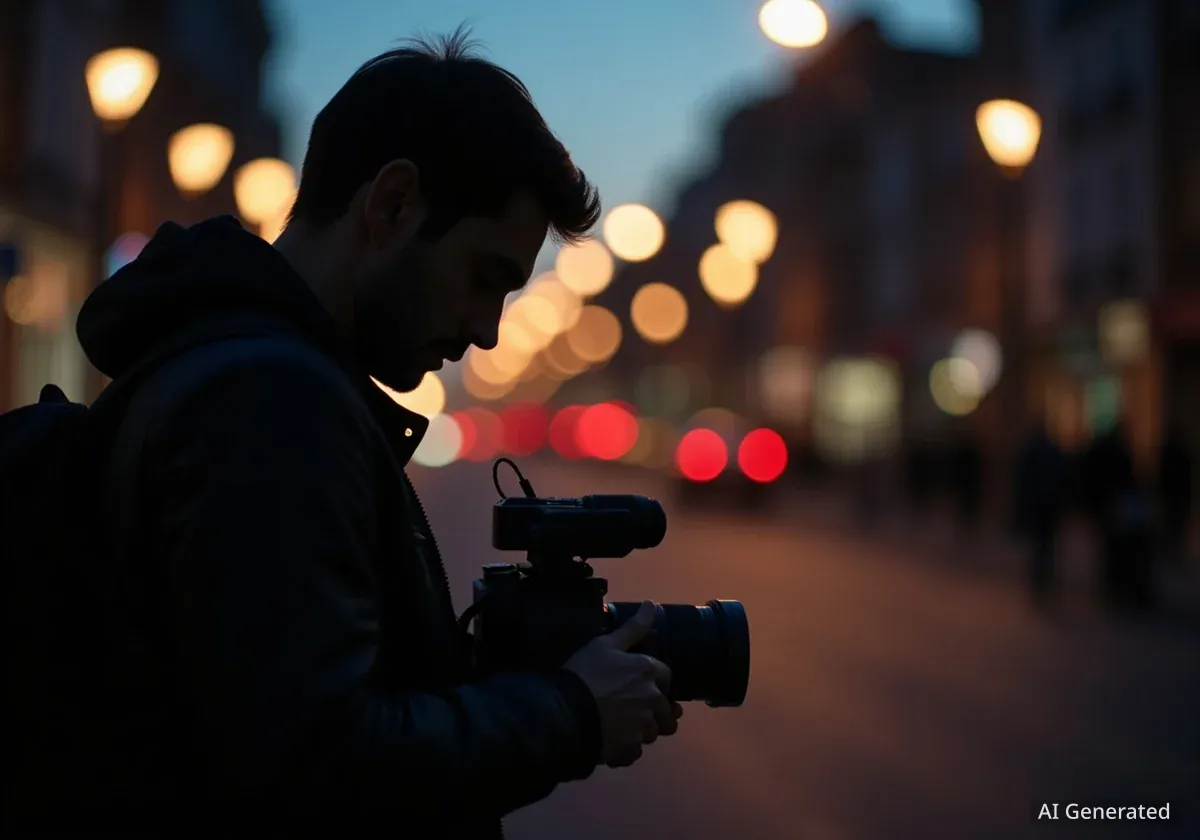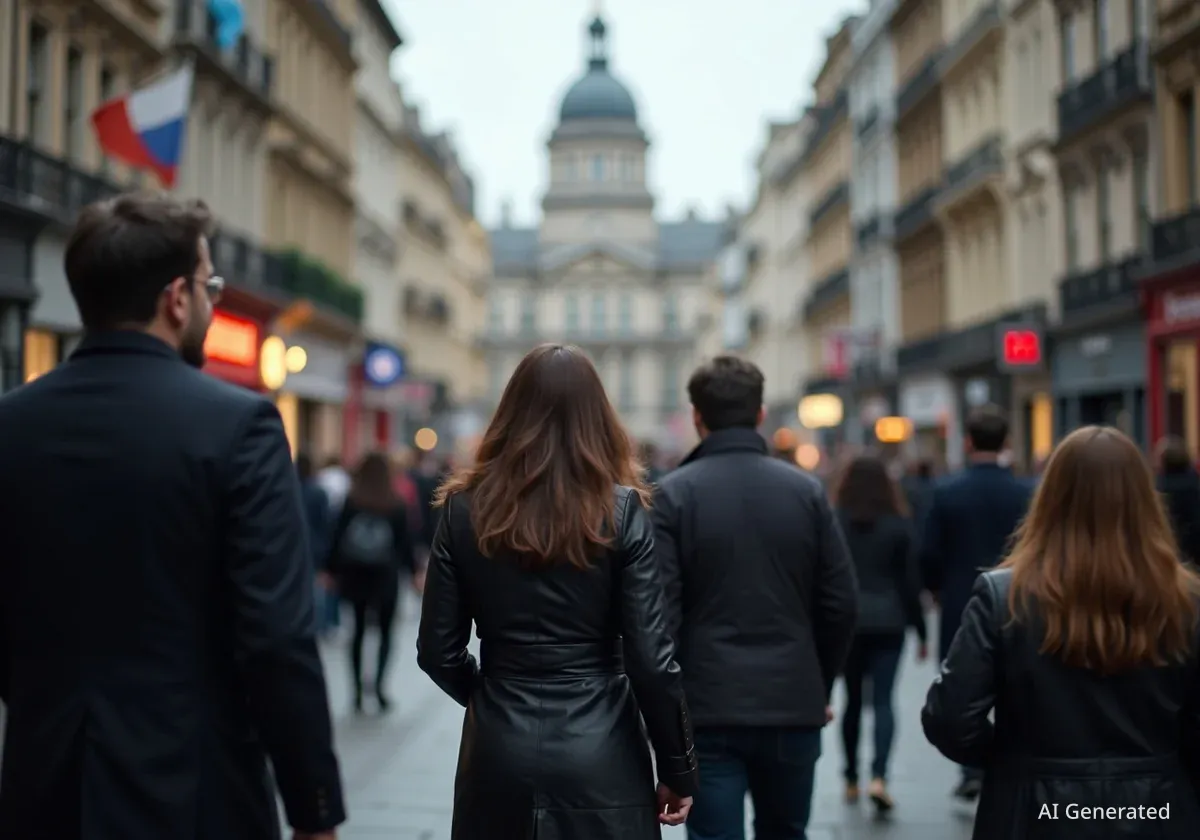Liverpool's historic architecture has once again taken a leading role on the small screen, with the city's streets and landmarks providing the backdrop for the new Netflix drama, House of Guinness. From the creator of Peaky Blinders, Steven Knight, the series used key locations across Liverpool to recreate 19th-century Dublin and New York, showcasing the city's versatility as a premier filming destination.
Filming took place throughout 2024, with production crews transforming areas around St George's Hall, Stanley Dock's Tobacco Warehouse, and the Town Hall into bustling period settings. The series, which follows the famous Guinness family dynasty, stars James Norton, Jack Gleeson, and Niamh McCormack, who were all spotted on set during the extensive shoot.
Key Takeaways
- Liverpool served as a primary filming location for the Netflix series House of Guinness, doubling for 19th-century Dublin and New York.
- Iconic landmarks including St George's Hall, Liverpool Town Hall, and the Tobacco Warehouse at Stanley Dock were extensively used.
- The production is from Steven Knight, the acclaimed creator of Peaky Blinders, another series that utilized Liverpool's unique architecture.
- Large-scale scenes involving period costumes, horses, carriages, and dramatic street demonstrations were filmed in the city centre.
Liverpool's Starring Role in the Guinness Saga
The new series, House of Guinness, delves into the lives of one of the world's most famous families following the death of its patriarch, Benjamin Guinness. The narrative spans both Dublin, the home of the brewing empire, and New York, capturing the ambition and turmoil of the 19th century. To bring this historical drama to life, producers required a location that could convincingly portray two distinct period cities.
Liverpool, with its wealth of well-preserved Victorian and Georgian architecture, was selected as a key filming hub. The city's ability to stand in for other global locations has earned it the title of the most-filmed city in the UK outside of London. Its grand public buildings, historic docks, and atmospheric cobbled streets provided the perfect canvas for the production.
Why Liverpool is a Filmmaker's Choice
Liverpool's architectural diversity makes it a highly sought-after location for film and television. Its waterfront can replicate historic ports, while its grand neoclassical buildings, like St George's Hall, can double for locations in London, Moscow, or Washington D.C. This versatility, managed by the Liverpool Film Office, attracts major productions like The Batman, Fantastic Beasts and Where to Find Them, and numerous period dramas.
Transforming Iconic Landmarks: A Closer Look
Throughout 2024, residents of Liverpool witnessed the remarkable transformation of their city. Streets were covered in earth, modern signage was hidden, and horse-drawn carriages became a common sight as the production for House of Guinness got underway. Several key areas were central to the filming schedule.
St George's Hall: The Epicentre of Drama
The area surrounding St George's Hall was used for some of the series' most dramatic scenes. Onlookers saw the space converted into a 19th-century public square, complete with market stalls, flower carts, and political banners reading "Vote for Guinness."
Photographs from the set captured what appeared to be a large-scale demonstration or riot scene. Dozens of extras in period attire, including actors portraying police officers, were involved in choreographed fight sequences. The production also featured a significant number of horses, a hearse, and actors in mourning clothes, suggesting a pivotal funeral scene was filmed against the backdrop of the iconic hall.
Stanley Dock and Tobacco Warehouse: Industrial Dublin Reimagined
The historic Stanley Dock, home to the immense Tobacco Warehouse, provided an industrial setting for the series. This location, already familiar to viewers of Peaky Blinders, was repurposed to represent the industrial heart of 1860s Dublin. The red-brick warehouses and atmospheric cobbled lanes, including the so-called "Peaky Blinders Lane," offered an authentic feel for the period.
According to Netflix, the production utilized the Tobacco Warehouse, the neighbouring South Warehouse, and the waterside setting of Collingwood Dock. These areas are instrumental in depicting the scale of the Guinness brewing operations and the gritty reality of 19th-century industrial life.
City Centre Streets: From Merseyside to Period New York
Beyond the major landmarks, several city centre streets were also given a historical makeover. Filming took place on Mount Street and Pilgrim Street, where crews installed period-appropriate signs and window dressings to transport the locations back in time.
These narrower, more intimate streets allowed the production to capture the everyday life of the era, contrasting with the grander scenes filmed at St George's Hall. The meticulous attention to detail, from wanted posters pasted on walls to the costumes of every extra, was essential in creating a believable world for the audience.
The Cast and Crew on Location
The presence of a high-profile cast brought an extra level of excitement to the city during filming. James Norton (Happy Valley), Anthony Boyle (Masters of the Air), and Finn O'Shea were all seen on set, often in detailed 19th-century costumes. Emily Fairn and Niamh McCormack were also spotted filming scenes near Liverpool Town Hall.
The scale of the production was evident from the large number of crew members, technical equipment, and logistical operations required. Areas were carefully sectioned off to allow for filming, with the crew working efficiently to capture complex scenes involving many moving parts.
The choice of Liverpool highlights the city's established reputation as a world-class filming location, capable of hosting large-scale, ambitious productions that demand both grand and intimate historical settings.
A Boost for Liverpool's Creative Sector
Hosting a major Netflix production like House of Guinness provides a significant economic and cultural boost to Liverpool. The production hires local crews, utilizes local services such as catering and accommodation, and raises the city's international profile.
It reinforces the success of the Liverpool Film Office in attracting and supporting major projects. For viewers now streaming the series, recognizing familiar Liverpool landmarks masquerading as Dublin and New York adds another layer of enjoyment and a sense of local pride.
As audiences immerse themselves in the world of the Guinness family, they are also, perhaps unknowingly, taking a tour through the historic heart of Liverpool, a city that continues to play a vital role in modern storytelling.





